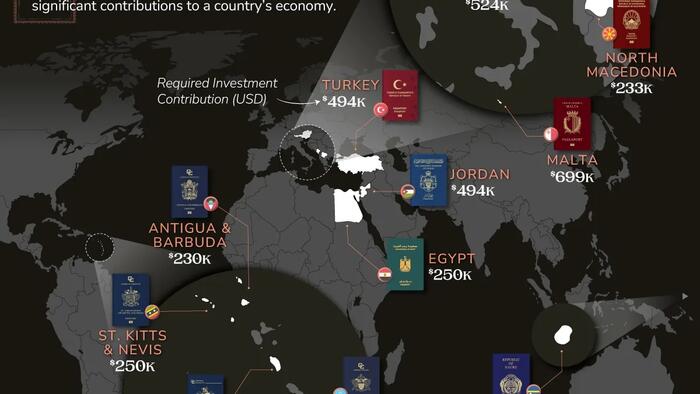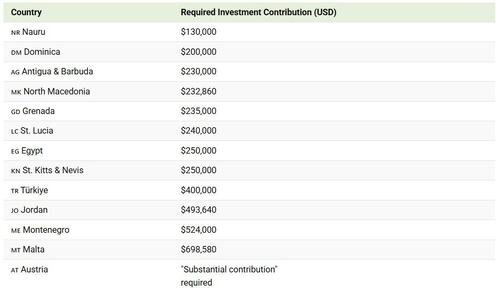


Citizenship by investment programs give wealthy individuals the chance to secure a second passport by making significant financial contributions. The requirements vary by country, but these programs typically seek investments in businesses, development funds, or direct donations.
In return, obtaining a second passport offers benefits like visa-free travel, tax advantages, or a backup plan in the event of political or economic turmoil.
In this visualization, Visual Capitalist's Marcus Lu breaks down the required contributions across 13 countries offering citizenship by investment, showing how much applicants need to spend to qualify.
The data for this visualization comes from Henley & Partners, highlighting the minimum contribution required by select countries offering citizenship by investment.
Note that this is not an exhaustive list, and that many other countries have some form of investment migration legislation.
At the lower end of the spectrum, Nauru offers a relatively cheaper program at about $130,000. The country’s passport provides visa-free or visa-on-arrival access to nearly 90 countries, though it lacks the broader travel privileges of Caribbean or European citizenship programs.
Dominica, Antigua & Barbuda, and St. Lucia are also affordable, requiring investments between $200,000 and $240,000. These Caribbean programs are popular for their cost-effectiveness and the travel flexibility they provide within the region.
Here’s a closer look at the benefits of Dominica’s citizenship by investment program:
To qualify for the program, applicants have the option of making a non-refundable contribution of $200,000 to Dominica’s Economic Development Fund (for a single applicant), or making a real estate purchase with a minimum value of $200,000.
Countries like Türkiye, Grenada, and Egypt fall in the middle range, with required contributions between $235,000 and $400,000.
Launched in 2017, Türkiye’s program has become attractive due to its large real estate market and access to both European and Middle Eastern travel corridors.
Applicants have many options to participate in the program, including, but not limited to:
At the top end, Malta and Montenegro require close to or more than $500,000, while Austria demands a “substantial contribution,” often exceeding several million.
These higher thresholds reflect the perceived value of EU citizenship, which offers broad visa-free access, stability, and economic advantages. As of 2025, Austria’s passport is considered the fourth most powerful in the world.
If you enjoyed today’s post, check out The Daily Cost of Traveling in Europe on Voronoi, the new app from Visual Capitalist.

